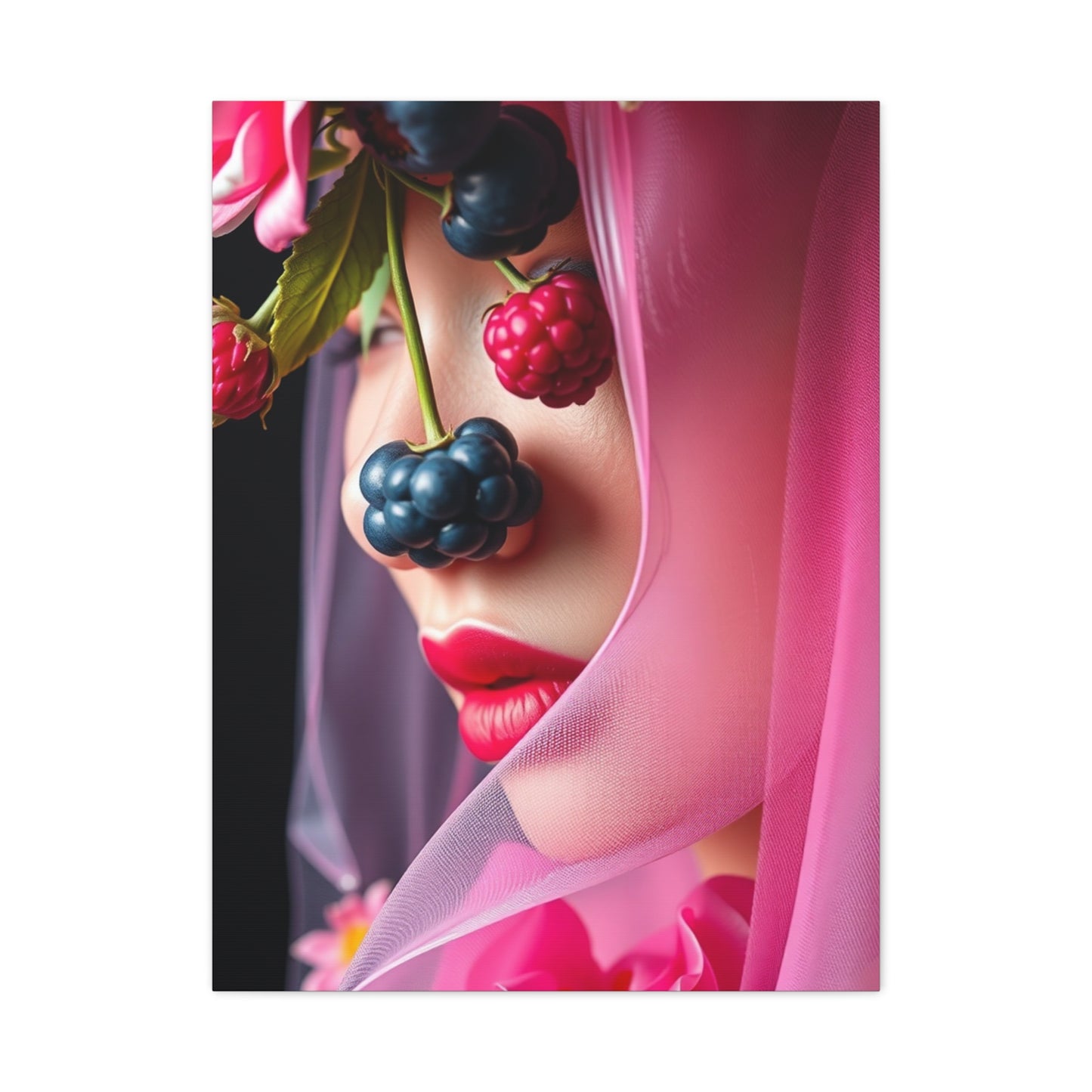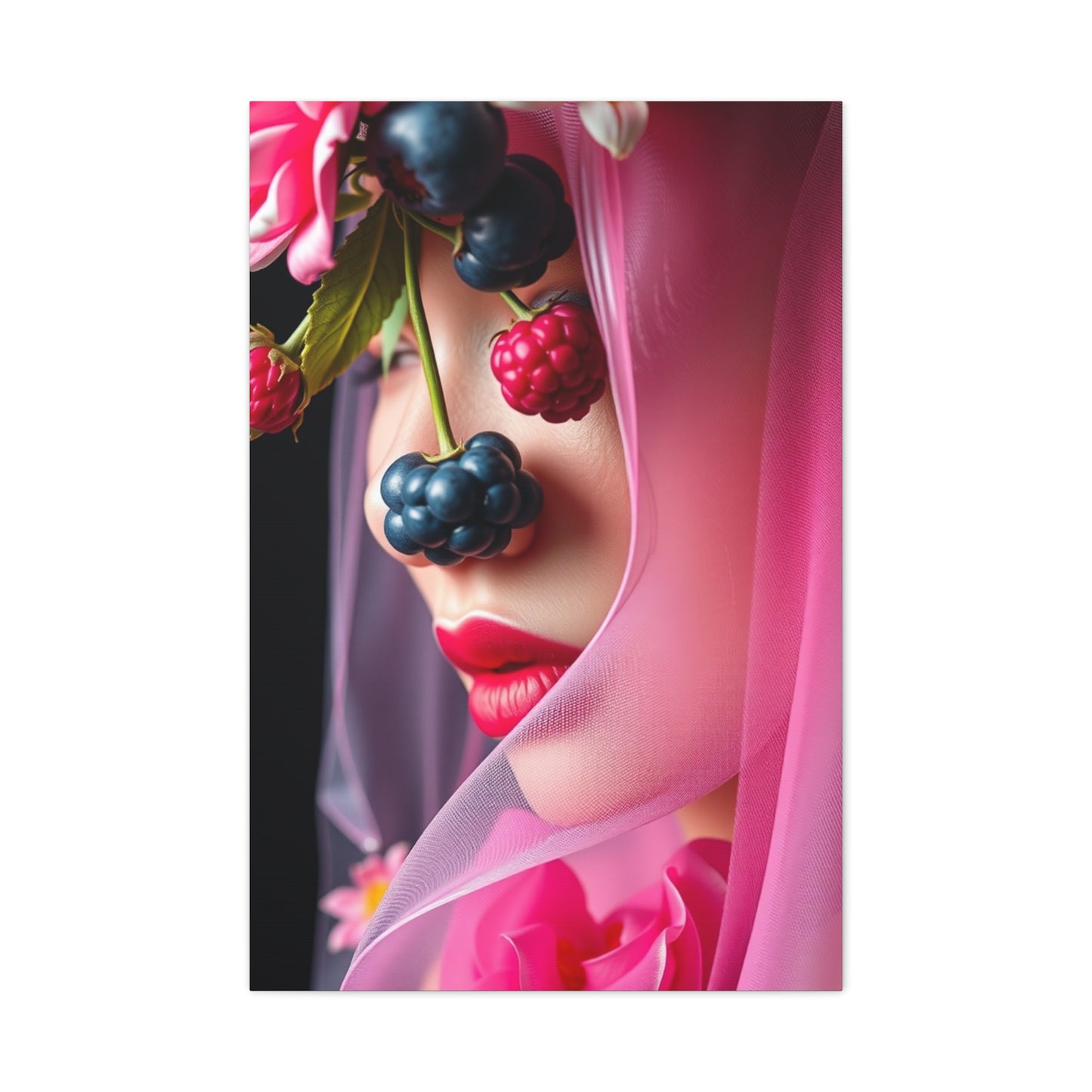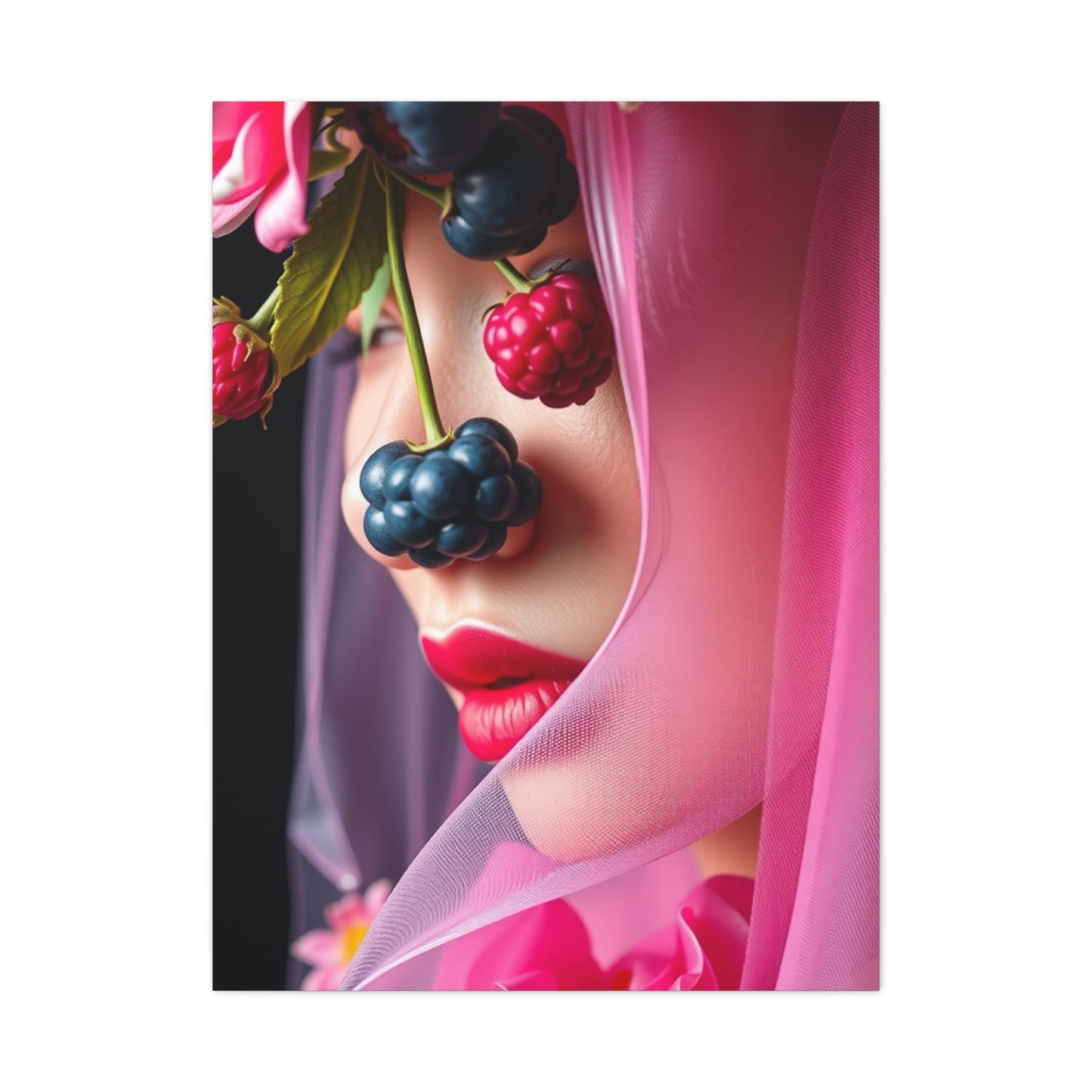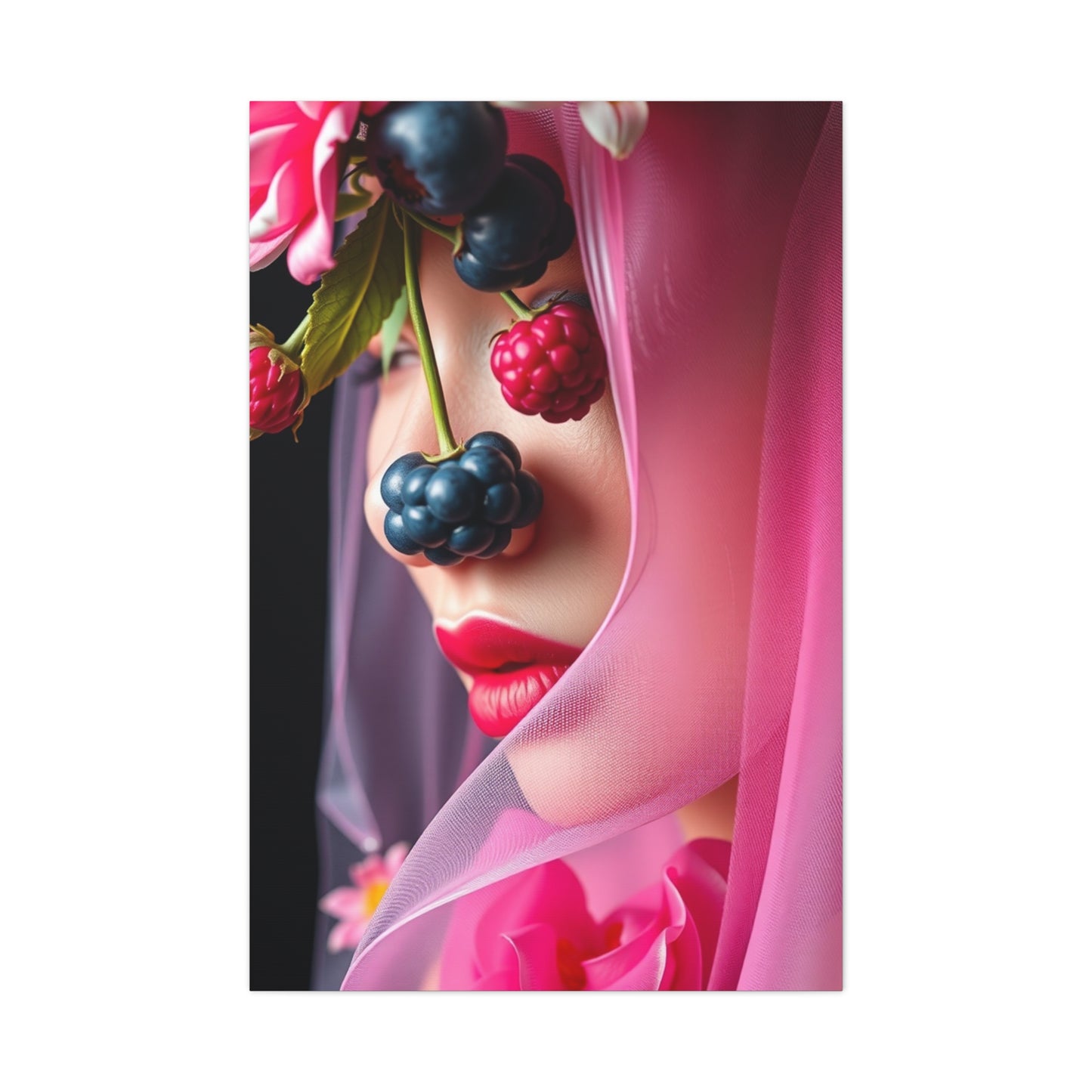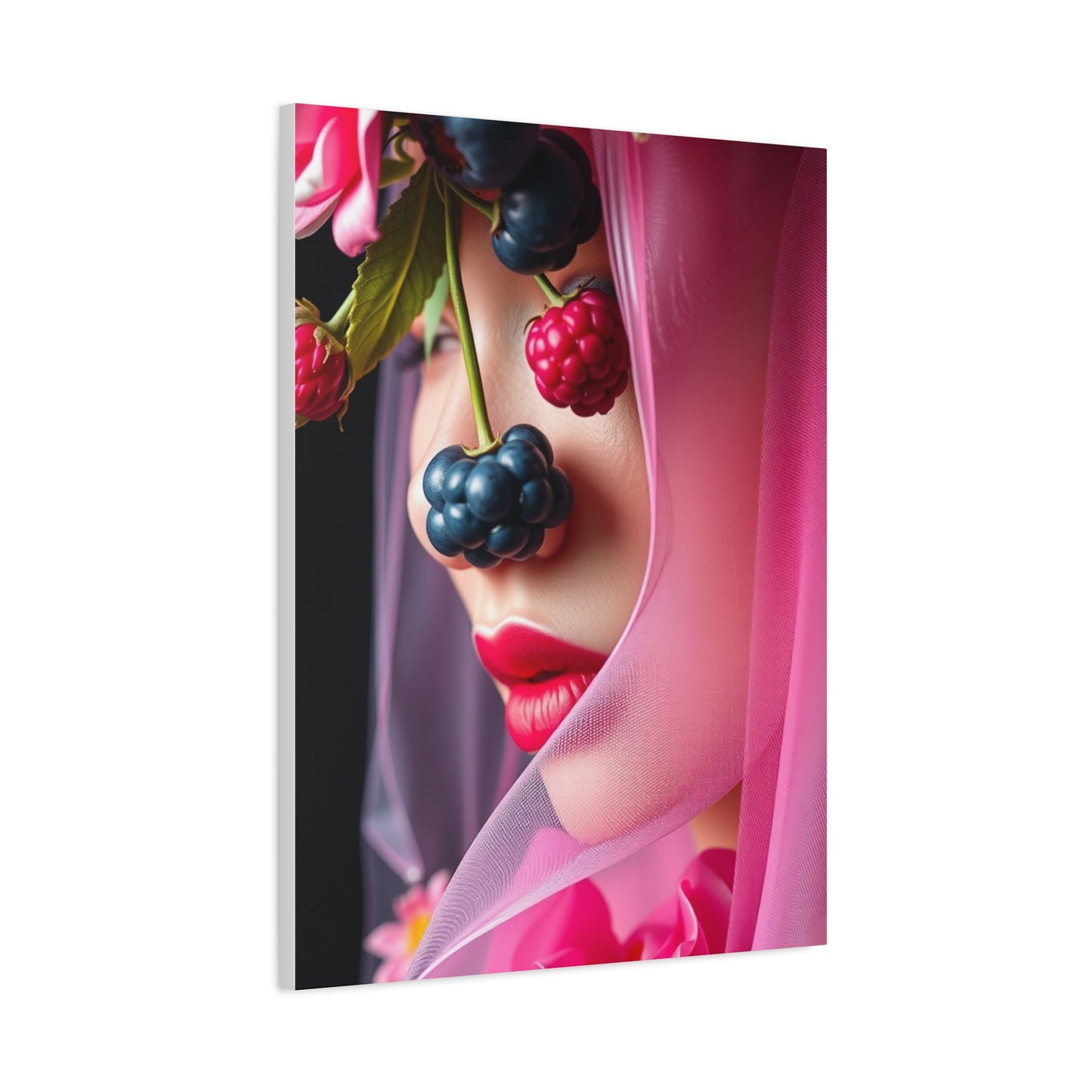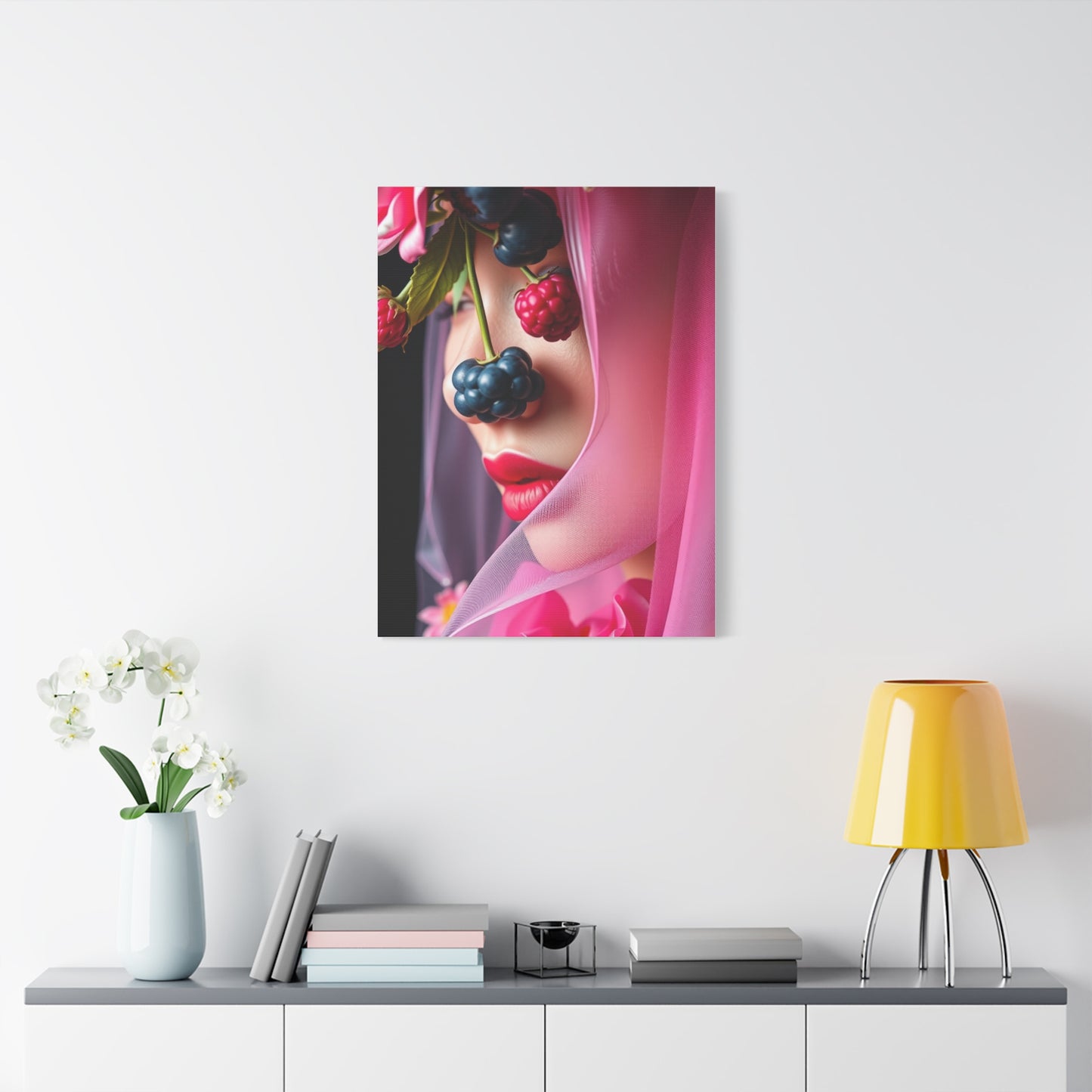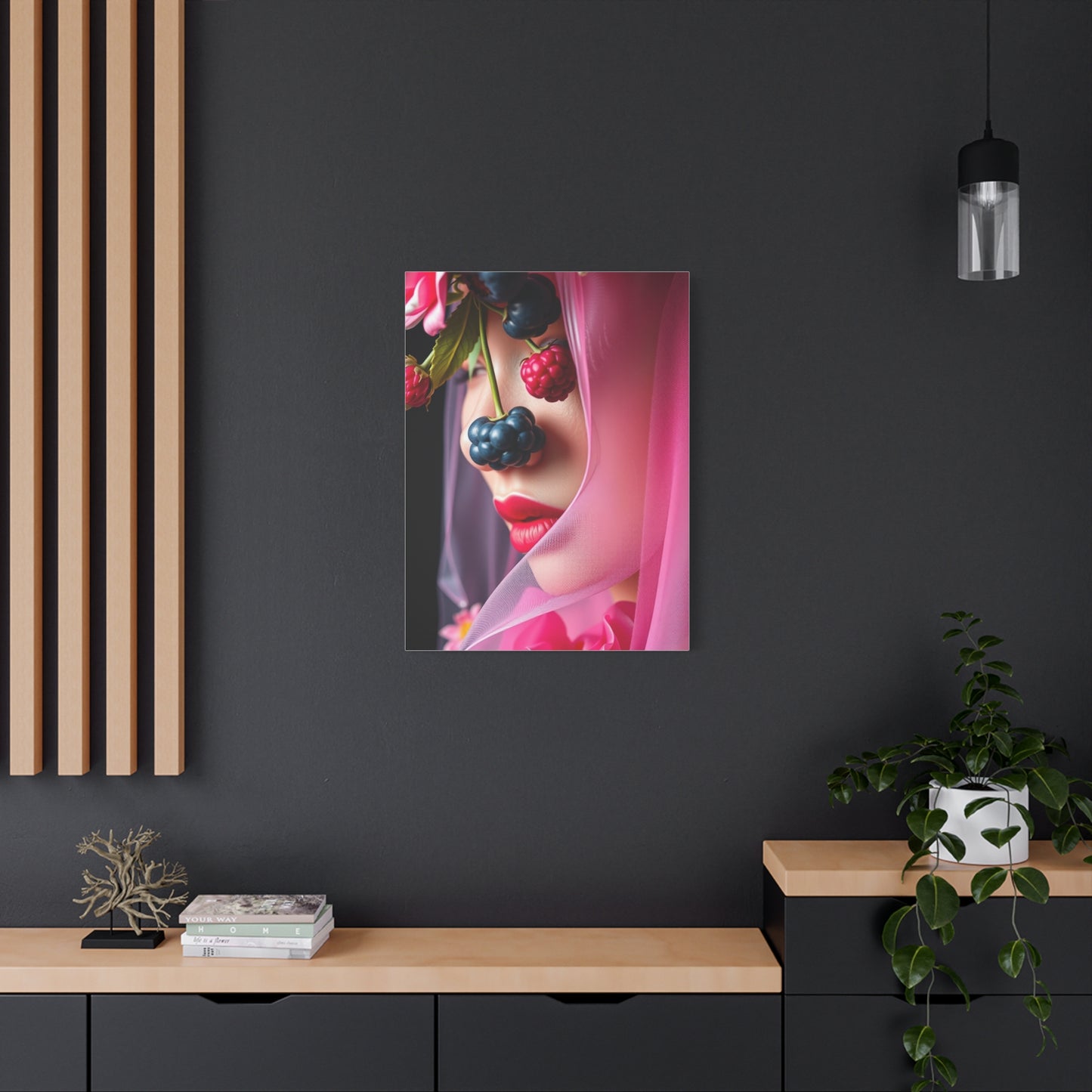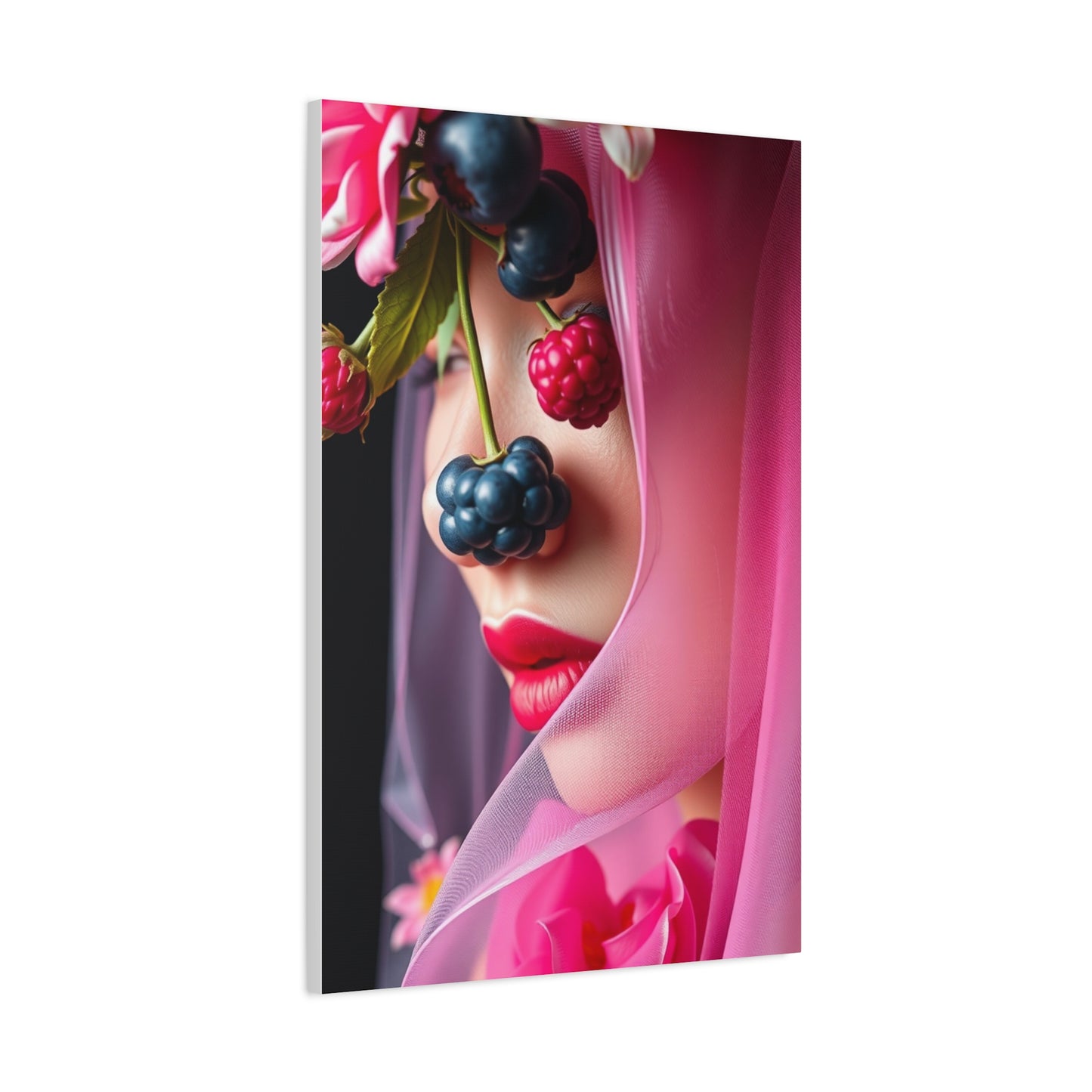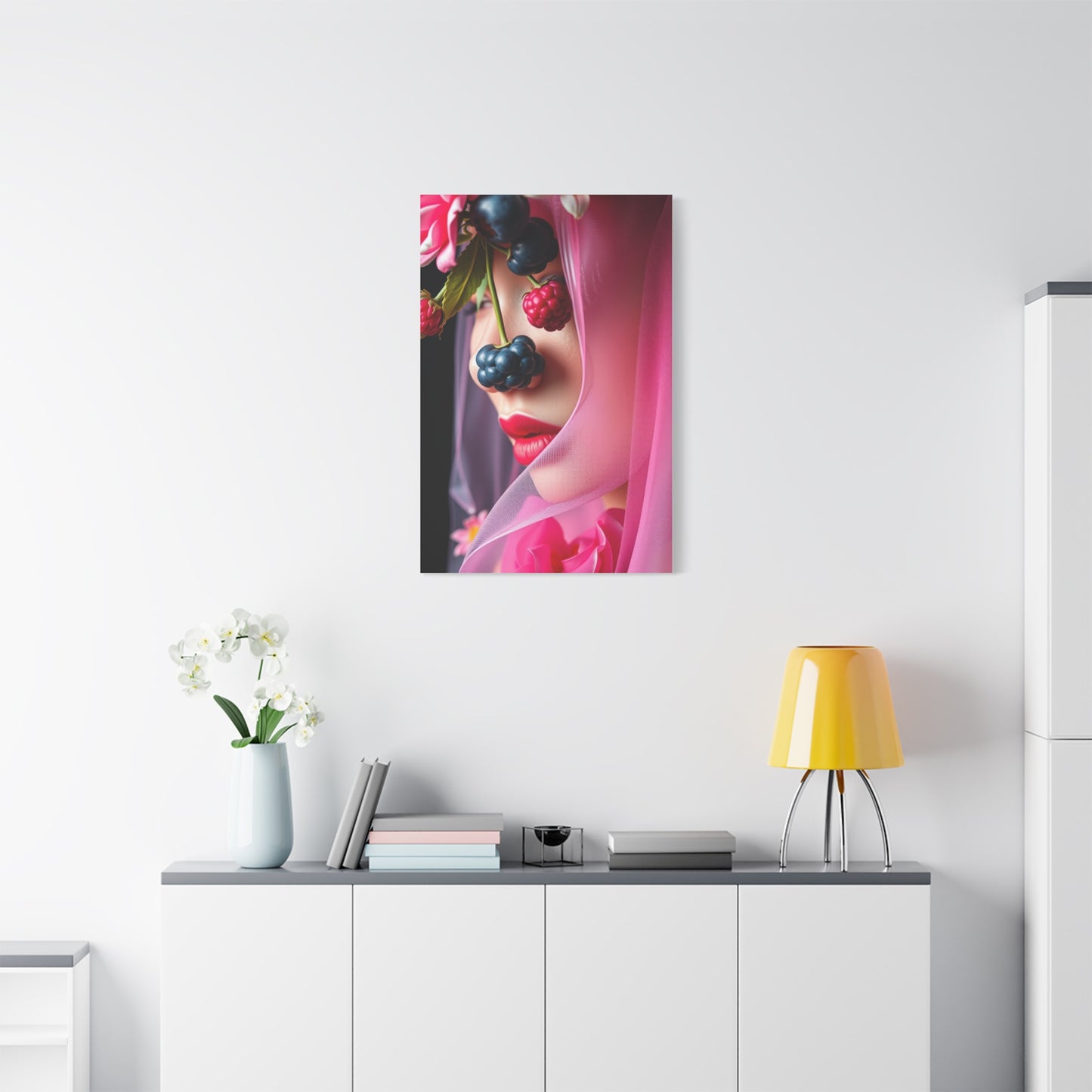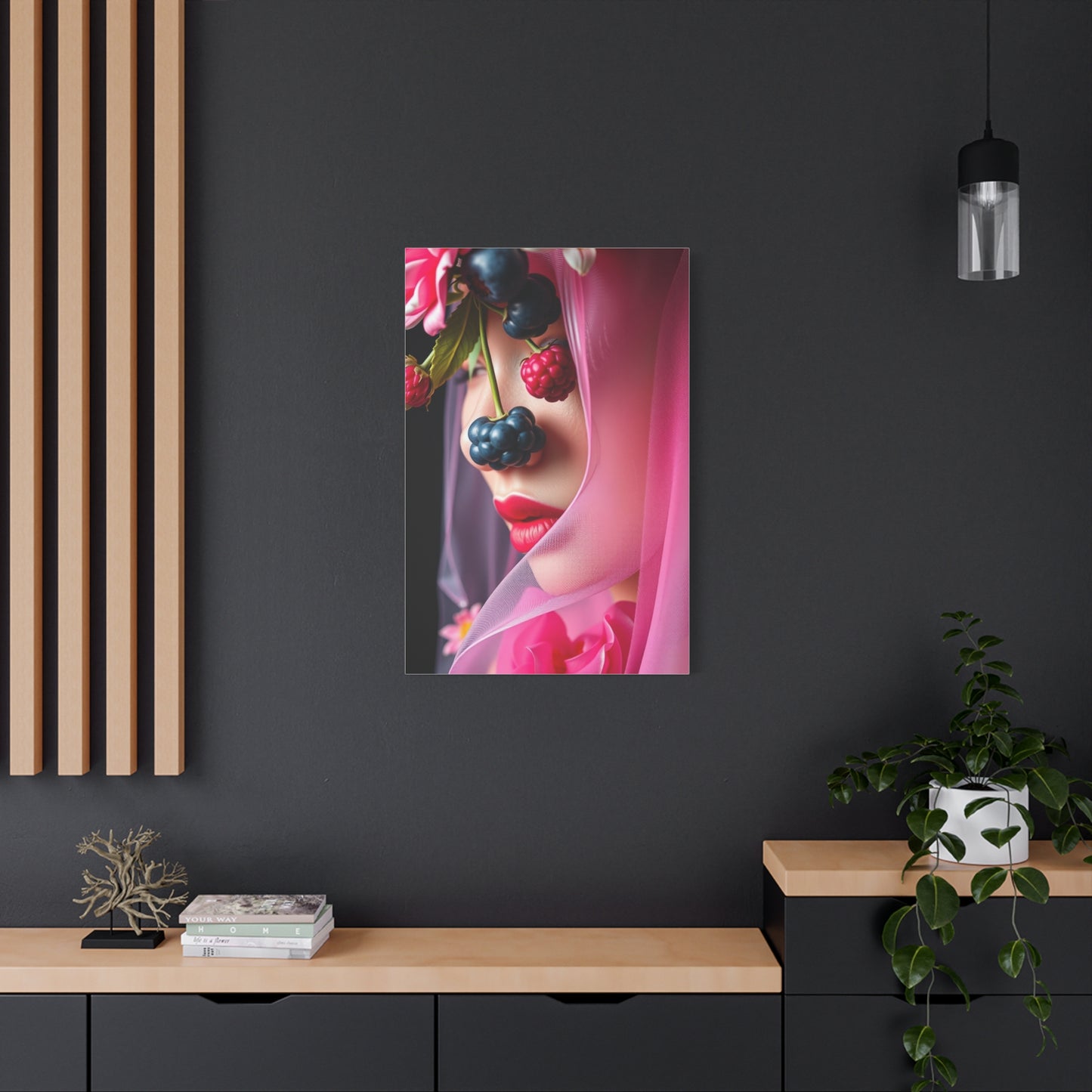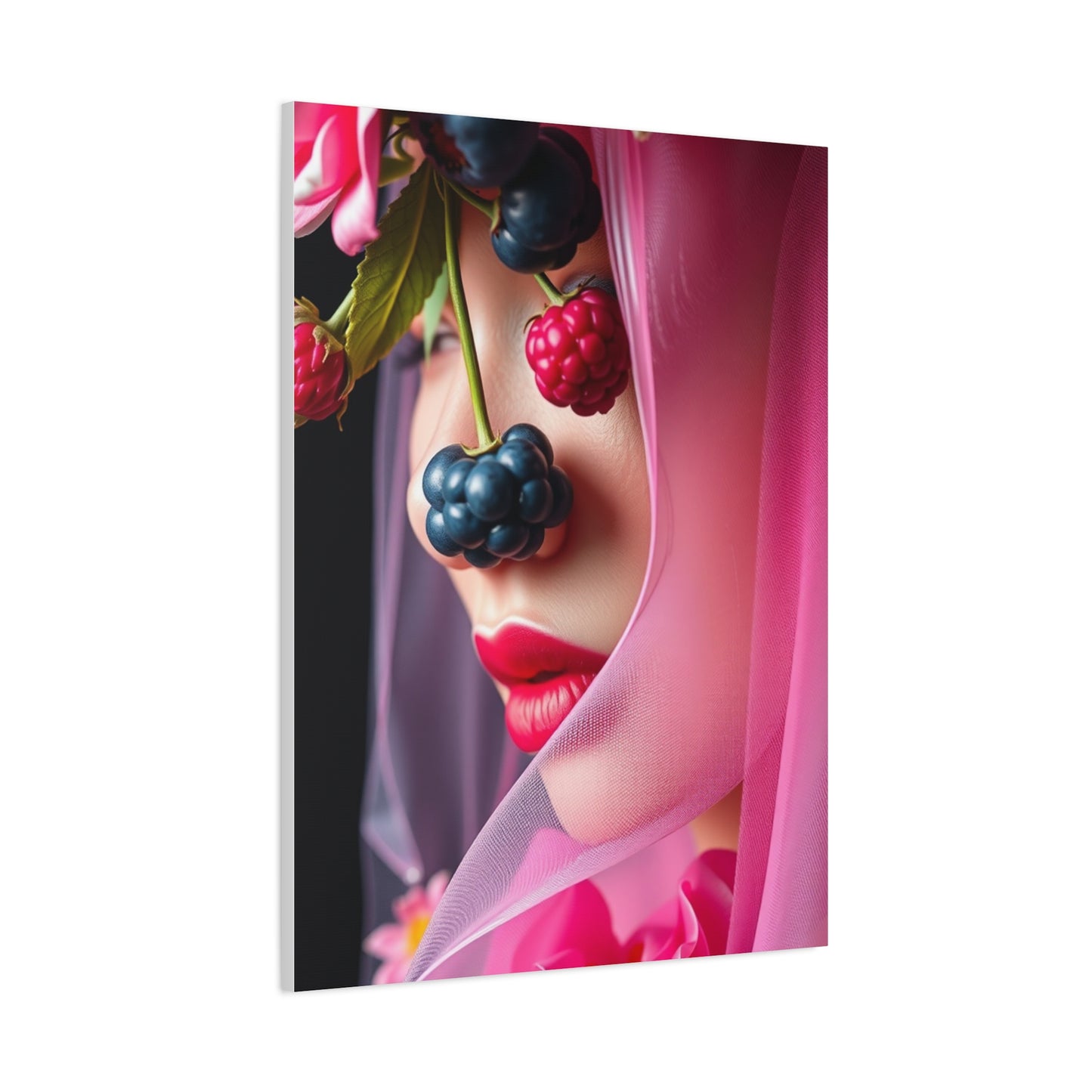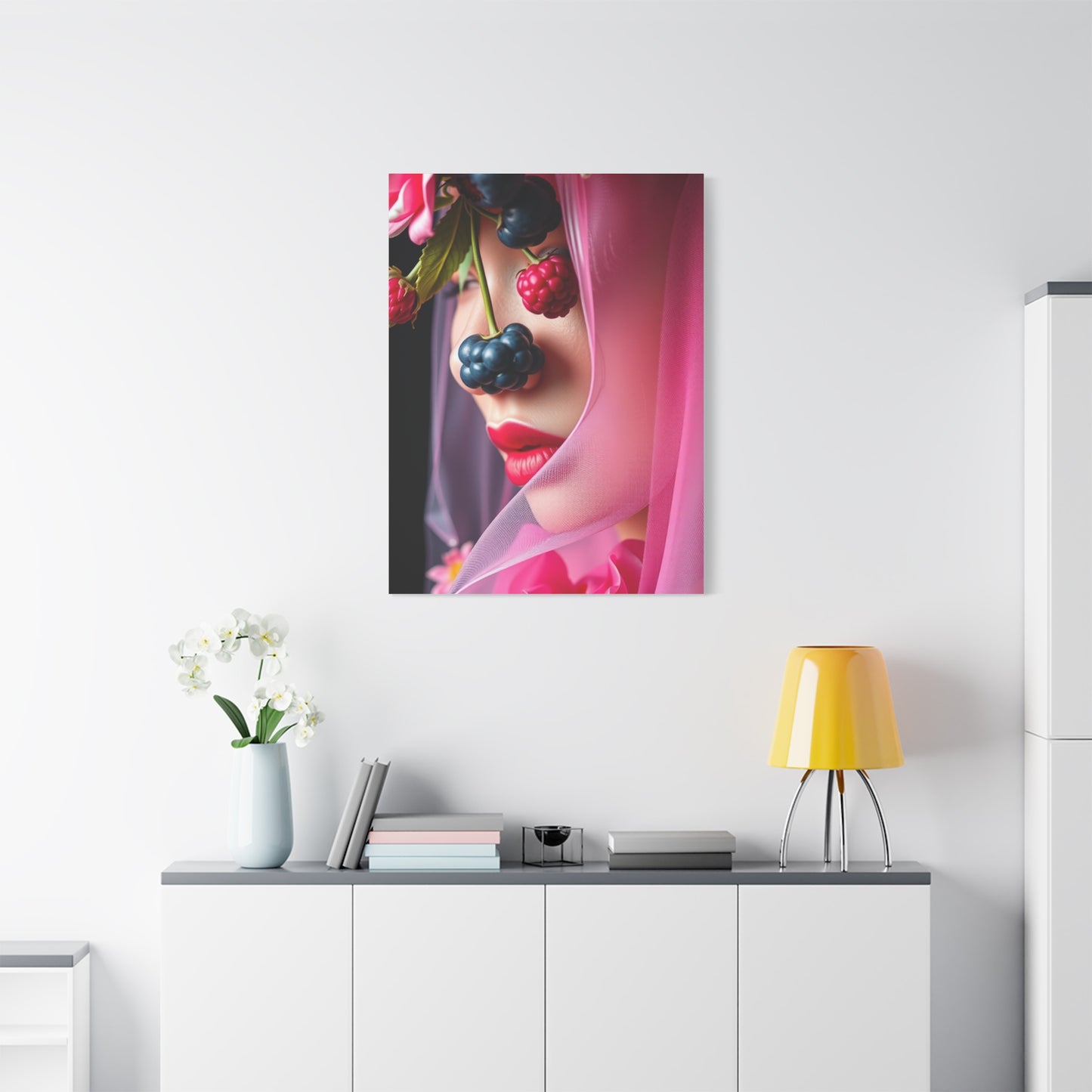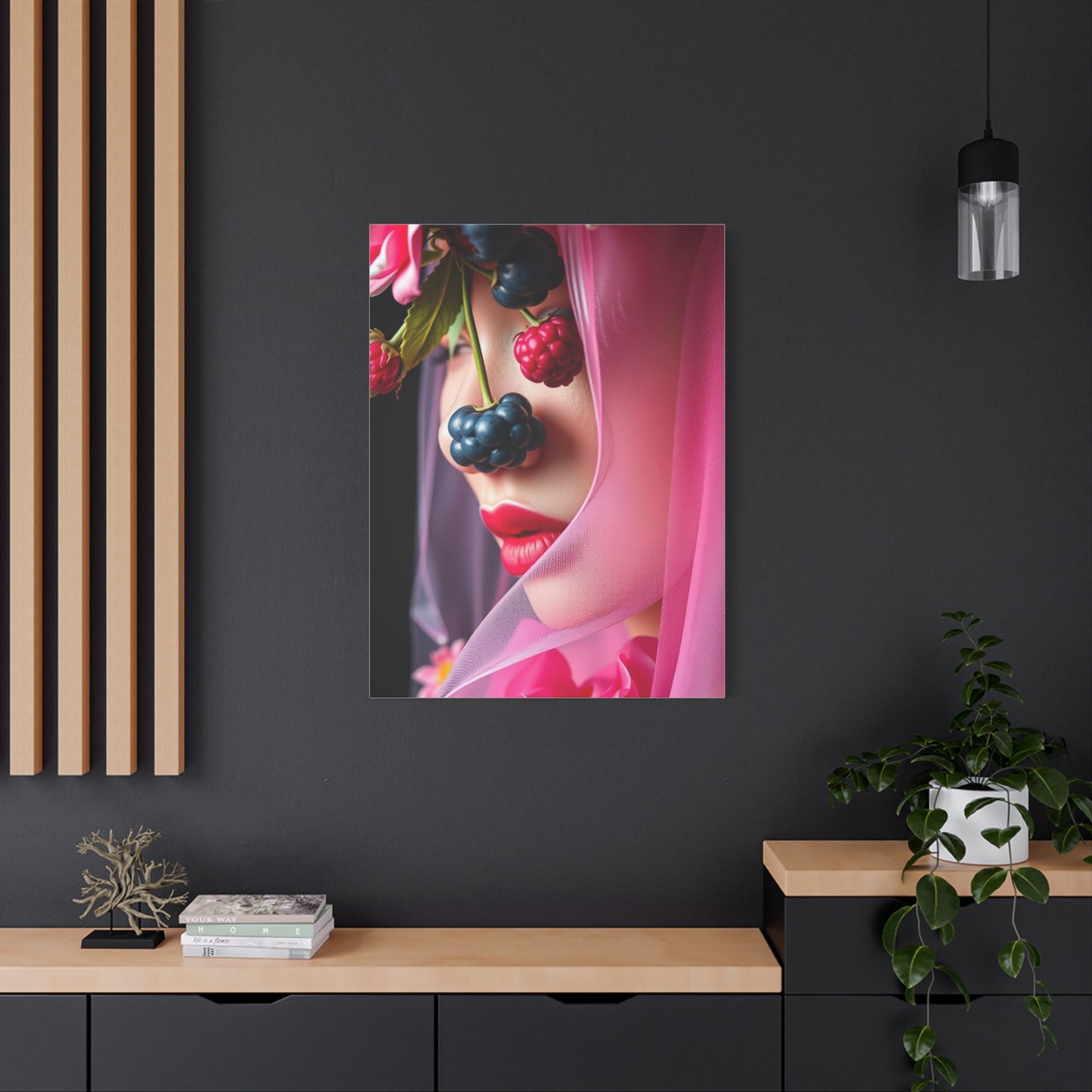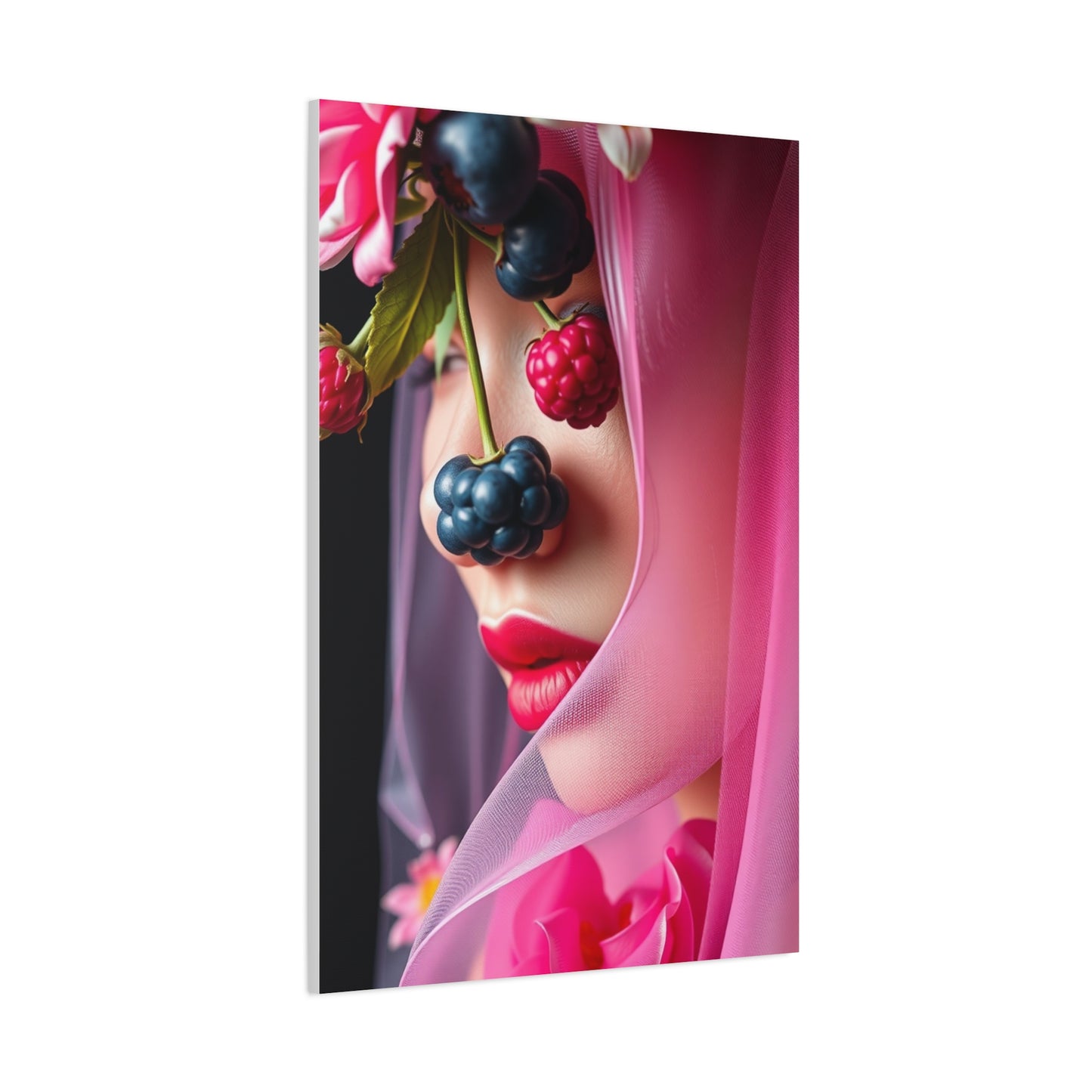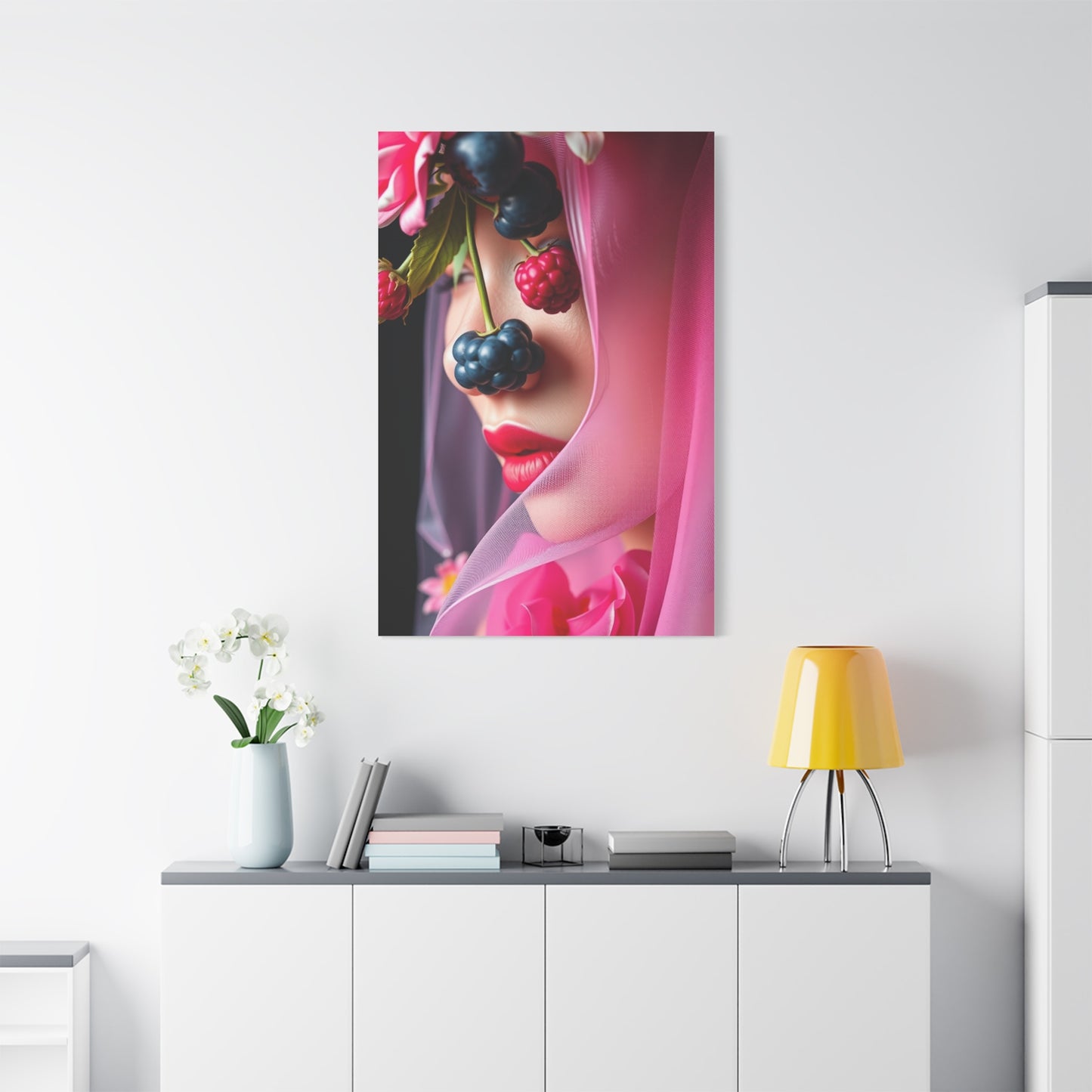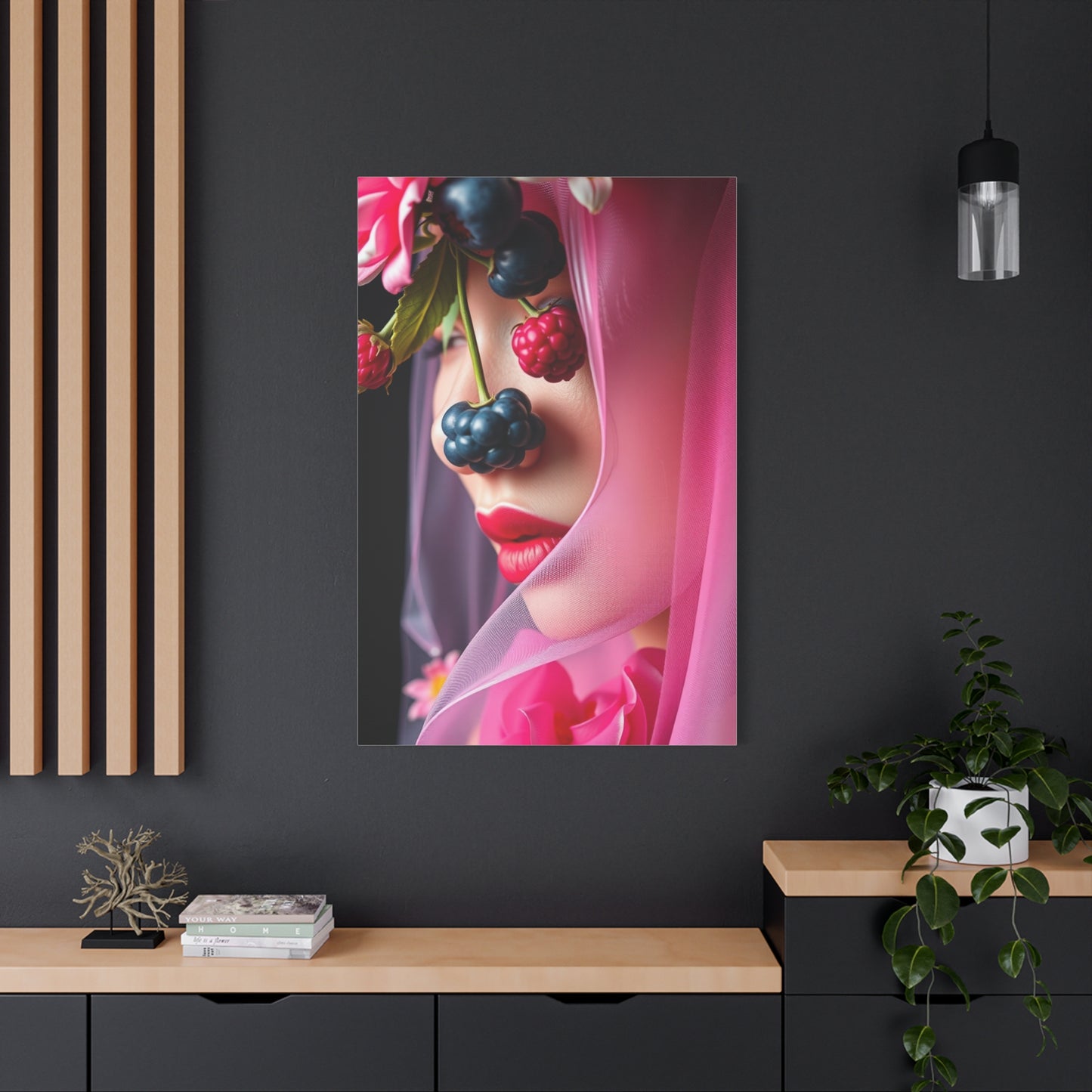Unveiling the Rosé Sapphire Canvas: Art that Dazzles and Delights
Rose sapphire canvas pieces represent a stunning fusion of deep jewel tones and delicate floral aesthetics that have captivated homeowners and decorators alike. These artistic creations blend the richness of sapphire blue with the warmth of rose hues, creating visual masterpieces that enhance any environment. The popularity of rose sapphire artwork has grown tremendously as people seek sophisticated yet approachable ways to elevate their homes with color, elegance, and personality.
The appeal of rose sapphire canvas lies in its versatility and timeless beauty. Whether you prefer modern minimalism or classic elegance, these pieces adapt seamlessly to various decorative styles. The combination of cool and warm tones creates a balanced visual effect that feels both calming and energizing. This unique characteristic makes rose sapphire canvas an excellent choice for those who want artwork that complements rather than dominates their existing furnishings.
Throughout this comprehensive guide, we will explore every aspect of incorporating rose sapphire canvas into your home. From selecting the perfect size to understanding how lighting influences the appearance of these pieces, you will gain valuable insights into making informed decisions. We will examine practical placement strategies, maintenance tips, and creative styling approaches that maximize the impact of your rose sapphire artwork.
The color palette of rose sapphire creates an emotional response that few other combinations can achieve. The deep blue tones evoke feelings of tranquility and depth, while the rose elements introduce warmth and romance. This duality makes rose sapphire canvas particularly effective in creating environments that feel both sophisticated and inviting. The interplay between these colors can dramatically alter the mood of a room, making it an powerful tool for anyone looking to refresh their surroundings.
As we delve deeper into this guide, you will discover how to care for your rose sapphire pieces to ensure they maintain their vibrant appearance for years to come. We will discuss the technical aspects of canvas art, including framing options, material quality, and preservation techniques. Additionally, we will explore the creative possibilities that emerge when you combine rose sapphire with other decorative elements, from complementary artwork to furnishings and accessories.
Whether you are a seasoned collector or someone just beginning to explore the world of canvas art, this guide offers valuable information tailored to all experience levels. The goal is to empower you with knowledge that enables confident decision-making when selecting, displaying, and maintaining rose sapphire canvas pieces. By understanding the nuances of this particular style, you can create cohesive, visually stunning environments that reflect your personal taste and enhance your daily living experience.
Living Room Arrangements with Rose Sapphire Prints
The living room serves as the heart of most homes, making it an ideal location for showcasing rose sapphire prints. When selecting pieces for this high-traffic area, consider how the artwork will interact with your existing furniture arrangement and color scheme. Rose sapphire canvas works exceptionally well above sofas, creating a natural focal point that draws the eye upward and adds visual interest to otherwise blank walls. The size of your print should be proportionate to your seating area, typically measuring between two-thirds and three-quarters the width of your sofa for optimal balance.
Placement height is crucial when displaying rose sapphire prints in living areas. The center of your artwork should rest approximately at eye level, usually between 57 and 60 inches from the floor. This positioning ensures comfortable viewing whether guests are standing or seated. In rooms with high ceilings, you might adjust this guideline slightly upward, but be cautious not to place artwork so high that it feels disconnected from the furniture below. The relationship between your rose sapphire canvas and surrounding elements should feel cohesive and intentional.
The colors within rose sapphire prints can be echoed throughout your living room through carefully chosen accessories. Throw pillows in complementary shades of blue or rose pink create visual connections between your artwork and seating areas. Similarly, decorative vases, blankets, or area rugs that incorporate similar tones help establish a unified aesthetic. This approach does not require exact color matching; rather, it involves creating harmonious relationships between various elements that feel natural and uncontrived.
Lighting plays a transformative role in how rose sapphire prints appear in living environments. Natural light from windows can cause colors to shift throughout the day, with morning light often enhancing cooler tones and afternoon sun bringing out warmer hues. Consider this variation when positioning your artwork, ensuring that no matter the time of day, your prints remain visually appealing. Supplemental lighting, such as picture lights or strategically placed lamps, can provide consistency and drama, especially during evening hours when natural light diminishes.
The texture of your rose sapphire canvas adds another dimension to living room aesthetics. Many high-quality canvas prints feature visible brushstroke textures that create depth and authenticity. When combined with other textured elements like woven throws, plush carpets, or natural wood furniture, these pieces contribute to a layered, sophisticated environment. The tactile quality of canvas distinguishes it from flat poster prints, offering a more substantial and artistic presence that elevates the entire room.
Consider the viewing angles within your living room when positioning rose sapphire prints. Unlike televisions or mirrors that require direct sightlines, artwork can be appreciated from various perspectives. A piece positioned on a side wall might be viewed at an angle from the main seating area, creating interesting visual dynamics as people move through the room. This multi-dimensional viewing experience adds to the artwork's impact and ensures it remains engaging even to those who see it daily.
The emotional atmosphere you wish to create in your living room should guide your selection of rose sapphire prints. Pieces with dominant blue tones tend to create calming, serene environments perfect for relaxation and conversation. Conversely, prints where rose hues take precedence introduce warmth and energy, making the room feel more vibrant and welcoming. Many rose sapphire pieces strike a balance between these extremes, offering versatility that works well in multipurpose living areas where different moods are appropriate at different times.
When arranging furniture in relation to rose sapphire artwork, think about sightlines and focal points. Your primary seating should face or angle toward major art pieces, creating intentional viewing opportunities. This does not mean every chair must directly face the artwork, but there should be a clear relationship between seating arrangements and visual anchors. In larger living rooms, multiple rose sapphire pieces can be distributed to create several points of interest, preventing any single wall from feeling overwhelming or neglected.
The frame or mounting style you choose for rose sapphire prints significantly impacts their presentation in living areas. Gallery-wrapped canvases that extend the image around the edges create a modern, seamless look that works well in contemporary settings. Alternatively, traditional frames in complementary colors or materials can add formality and protection. Consider the existing woodwork, furniture finishes, and architectural details in your living room when making this decision, ensuring your choice enhances rather than conflicts with the established aesthetic.
Seasonal changes provide opportunities to refresh the context around your rose sapphire prints without moving the artwork itself. In autumn, incorporate warm metallic accents like copper or bronze that echo the rose tones. During winter, lean into the cooler sapphire hues with silver accessories and deeper blue textiles. Spring and summer allow for lighter, airier combinations that highlight the artwork's romantic qualities. This seasonal rotation keeps your living room feeling current and prevents decorative stagnation while maintaining the artwork as a constant, grounding element.
Maintenance and Care for Rose Sapphire Canvas Artwork
Proper maintenance ensures your rose sapphire canvas artwork retains its beauty and vibrancy for many years. Canvas material is relatively durable but requires specific care practices to prevent damage. The most immediate threat to canvas art comes from dust accumulation, which can dull colors and obscure fine details over time. Regular dusting using a soft, dry microfiber cloth or a clean, soft-bristled brush prevents buildup. Always use gentle motions, working from top to bottom to allow dust to fall away from the canvas rather than being pushed into the weave.
Humidity levels in your home significantly affect canvas longevity. Excessive moisture can cause the canvas material to expand, contract, or develop mold, while overly dry conditions may lead to cracking or brittleness. Ideal humidity levels for displaying canvas art range between 40 and 60 percent. In climates or seasons where humidity fluctuates dramatically, consider using a humidifier or dehumidifier to maintain stable conditions. Avoid hanging rose sapphire canvas in bathrooms, laundry rooms, or other high-moisture environments where condensation regularly occurs.
Direct sunlight poses one of the most serious threats to canvas artwork. Ultraviolet rays cause pigments to fade unevenly, potentially altering the delicate balance between rose and sapphire tones that makes these pieces so appealing. When positioning your artwork, avoid walls that receive direct sun exposure for extended periods. If you have limited wall options, consider UV-protective glazing or acrylic covers, though these are more commonly used with framed pieces. Window treatments like curtains or blinds offer additional protection by filtering harsh afternoon sun.
Temperature extremes and rapid fluctuations can damage canvas material and cause paint to crack or peel. Avoid hanging rose sapphire artwork near heating vents, radiators, fireplaces, or air conditioning units that blast cold air directly onto the piece. Similarly, attics and basements often experience temperature swings that make them unsuitable for long-term art storage. Maintaining consistent room temperatures between 65 and 75 degrees Fahrenheit provides a stable environment that preserves your artwork's condition.
Cleaning canvas requires caution and appropriate materials. For routine maintenance, the dry dusting method mentioned earlier suffices. However, if your rose sapphire canvas accumulates grime or sticky residue, slightly more intensive cleaning may be necessary. Test any cleaning solution on an inconspicuous area first, typically a corner or edge. A barely damp cloth with distilled water can address light soiling, but never saturate the canvas or use excessive moisture. Avoid commercial cleaning products, which may contain chemicals that react negatively with canvas materials or pigments.
The back of your canvas deserves attention as well, as dust and debris can accumulate there over time. Periodically inspect the rear of your rose sapphire artwork, gently removing any buildup with a soft brush or vacuum with a brush attachment held at a distance. This practice prevents particles from working their way through to the visible front surface. Additionally, check mounting hardware for security, ensuring that hanging mechanisms remain firmly attached and capable of supporting the artwork's weight without stress.
Professional cleaning and restoration services exist for canvas artwork that requires more extensive care than home maintenance can provide. If your rose sapphire piece suffers damage from accidents, develops stubborn stains, or shows signs of deterioration, consulting a professional conservator may be worthwhile. These specialists possess the knowledge, tools, and materials necessary to address serious issues without causing further harm. While professional services represent an investment, they can save pieces that might otherwise be unsalvageable through amateur restoration attempts.
When moving or transporting rose sapphire canvas, proper handling prevents accidental damage. Always grip the frame or stretcher bars rather than the canvas surface itself, as pressure from fingers can create indentations or transfer oils that attract dirt. If you must move artwork frequently, consider protective coverings like acid-free paper or bubble wrap, ensuring materials do not directly contact the painted surface. For extended storage, wrap pieces individually and store them upright rather than stacked, which can cause warping or pressure damage.
Insects and pests rarely target canvas directly but may be attracted to organic materials in traditional frames or damage artwork while seeking shelter. Regular inspection helps identify any pest activity before significant damage occurs. Look for small holes, webbing, or the insects themselves, particularly in undisturbed corners. If you discover pest issues, isolate affected artwork immediately and consult pest control professionals who understand the delicate nature of art preservation. Preventive measures include maintaining cleanliness around artwork and avoiding storage in damp, dark areas where pests thrive.
Documentation of your rose sapphire canvas pieces serves practical purposes beyond simple record-keeping. Photograph your artwork from multiple angles in various lighting conditions shortly after acquisition. Record dimensions, framing details, purchase information, and any distinguishing characteristics. This documentation proves invaluable for insurance purposes, helps with reordering or matching pieces in series, and provides a reference point for tracking any changes in condition over time. Store this information digitally with backups, ensuring it remains accessible even if physical records are lost.
Rose Sapphire in Minimalist Environments
Minimalist aesthetics emphasize simplicity, clean lines, and purposeful selection of every element within a room. Rose sapphire canvas fits naturally into these environments by providing visual interest without overwhelming the senses. In minimalist settings, each decorative choice carries significant weight, making the selection of artwork particularly important. A single, well-chosen rose sapphire piece can serve as the room's primary color source, anchoring the entire aesthetic while maintaining the uncluttered sensibility that defines minimalism.
The color palette of minimalist environments typically features neutrals like white, gray, beige, and black, creating a perfect backdrop for rose sapphire artwork. These neutral foundations allow the vibrant blues and soft pinks to stand out without competition, giving the artwork maximum visual impact. The contrast between minimalist surroundings and colorful canvas creates a striking effect that draws attention without requiring additional decorative elements. This approach embodies the minimalist principle of intentional curation, where every item present serves a clear purpose.
Scale considerations become even more critical in minimalist settings where negative space plays a starring role. A rose sapphire canvas in a minimalist room should be appropriately sized to command attention without overwhelming the carefully maintained balance. Oversized pieces work well on large, empty walls, becoming almost architectural elements that define the character of the entire room. Conversely, smaller pieces might be better suited to more intimate settings where they can be appreciated up close without fighting for attention against competing elements.
The abstract nature of many rose sapphire pieces aligns well with minimalist philosophy. Abstract art invites personal interpretation without imposing specific narratives or complex imagery that might clutter the visual field. The flowing forms and blended colors characteristic of rose sapphire work create contemplative focal points that encourage quiet reflection. This quality makes them particularly suitable for minimalist bedrooms, meditation areas, or any environment designed to promote calmness and mental clarity.
Framing choices in minimalist settings should enhance the artwork without introducing unnecessary complexity. Gallery-wrapped canvases with the image extending around the edges eliminate the need for traditional frames, creating a floating appearance that suits minimalist aesthetics perfectly. If frames are used, select simple profiles in neutral colors that complement rather than compete with the artwork. Metallic finishes like brushed aluminum or matte black can add subtle sophistication without disrupting the minimalist sensibility.
Lighting in minimalist environments requires careful consideration to properly showcase rose sapphire canvas. Without the visual noise of multiple decorative elements, lighting becomes a primary tool for creating atmosphere. Track lighting or recessed spotlights can be positioned to highlight artwork while maintaining the clean lines of ceiling planes. Alternatively, natural light from large windows often plays a major role in minimalist design, and positioning rose sapphire pieces to benefit from this illumination enhances their appearance while reinforcing the connection between indoor and outdoor environments.
The emotional impact of rose sapphire canvas becomes amplified in minimalist settings where visual distractions are minimal. Viewers can fully engage with the colors, textures, and forms without their attention being pulled in multiple directions. This focused appreciation aligns with the mindful intention behind minimalist design, where quality and presence matter more than quantity. A single rose sapphire piece in an otherwise sparse room becomes a meditation point, a source of daily visual pleasure that justifies its presence through beauty and emotional resonance.
Minimalist environments often employ repetition and rhythm as organizational principles. When incorporating multiple rose sapphire pieces, consider how they relate to one another within the simplified visual field. A series of smaller canvases arranged in a precise grid pattern creates rhythmic interest while maintaining order. Alternatively, varying sizes of rose sapphire work can be arranged to create dynamic balance, with larger pieces grounded by smaller companions. Whatever arrangement you choose, ensure that negative space remains abundant, preventing the grouping from feeling cluttered or chaotic.
The functionality inherent in minimalist design extends to artwork selection. Beyond aesthetic appeal, rose sapphire canvas in minimalist settings often serves to soften hard architectural elements or introduce warmth to potentially stark environments. The organic nature of the rose elements provides a counterpoint to geometric furniture and architectural features, creating balance between natural and manufactured forms. This functional beauty embodies minimalist values, where every element must justify its presence through both utility and aesthetic contribution.
Maintenance practices align naturally with minimalist lifestyles, as the simplified environments reduce dust accumulation and make regular cleaning straightforward. The lack of competing decorative elements means your rose sapphire canvas receives full attention during maintenance routines, making it easier to notice when dusting or other care is needed. This visibility encourages consistent upkeep, helping preserve the artwork's condition while reinforcing the disciplined approach to environmental management that minimalism requires.
Small versus Large Rose Sapphire Canvas Prints
The decision between small and large rose sapphire canvas prints involves multiple considerations beyond simple personal preference. Size dramatically affects how artwork functions within a room, influencing everything from visual impact to practical placement options. Large-scale pieces create bold statements that immediately capture attention upon entering a room. They work exceptionally well as standalone focal points above major furniture pieces or on prominent walls where their presence can be fully appreciated. The expansive canvas allows viewers to immerse themselves in the details and color transitions that make rose sapphire artwork so captivating.
Small rose sapphire pieces offer different advantages, particularly in terms of versatility and affordability. Multiple small canvases can be collected over time and arranged in various configurations, creating opportunities for creative expression and easy updates. They fit comfortably in spaces where large artwork would overwhelm, such as narrow hallways, small bedrooms, or office cubicles. The more intimate scale invites closer inspection, rewarding viewers who take time to examine the intricate details that might be lost at a distance with larger pieces.
Budget considerations often play a significant role in size selection. Large canvas prints typically command higher prices due to increased material costs and production complexity. They represent more substantial investments that require careful consideration before purchase. Small pieces provide entry points into rose sapphire artwork without major financial commitment, allowing collectors to test their preferences or gradually build collections. For those decorating entire homes, combining small and large pieces across different rooms can create cohesive aesthetics while managing expenditures.
The architectural characteristics of your rooms should guide size decisions. Rooms with high ceilings accommodate large vertical pieces that draw the eye upward and make the most of available wall height. Conversely, rooms with standard ceiling heights might feel more balanced with horizontal or moderately sized pieces that maintain appropriate proportions. Wall dimensions matter as well; a large canvas on a small wall creates cramped feelings, while a small piece on an expansive wall may appear lost and insignificant.
Visual weight differs significantly between small and large rose sapphire prints. Large pieces carry substantial visual weight that requires balancing with substantial furniture or architectural features. A massive canvas demands a confident placement strategy that acknowledges its dominance within the room. Small pieces have lighter visual weight, making them easier to integrate into existing arrangements without requiring major furniture repositioning or complementary decor changes. This flexibility makes small pieces particularly appealing for renters or those who frequently refresh their environments.
The viewing distance appropriate for your artwork affects size selection. Large pieces are designed to be appreciated from several feet away, where the overall composition and color relationships create maximum impact. Moving too close to oversized work can make it difficult to perceive the complete image. Small pieces invite intimate viewing experiences where details and textures become apparent at close range. Consider how you will typically interact with the artwork when deciding on size, matching the piece to the viewing conditions of its intended location.
Collection building strategies differ based on size preferences. Large piece collectors typically focus on acquiring fewer, more significant works that serve as centerpieces in key locations. This approach requires careful selection since each piece represents a major commitment of wall space and budget. Small piece collectors can develop more extensive collections, creating opportunities for thematic groupings, seasonal rotations, or exploratory purchases without the pressure of perfect selection. Both approaches have merits, and many collectors eventually embrace a hybrid strategy.
Installation requirements vary considerably between small and large rose sapphire canvas. Large pieces demand secure mounting systems capable of supporting significant weight, often requiring multiple wall anchors or specialized hanging hardware. Professional installation may be advisable for particularly large or valuable pieces. Small canvases typically hang easily with standard picture hooks or adhesive strips, making them practical choices for those uncomfortable with complex installation projects or living in rental properties with restrictions on wall modifications.
The impact on room proportions represents another critical difference. Large rose sapphire pieces can make small rooms feel even smaller if not carefully selected and positioned. However, they can also create the illusion of expanded space when properly placed, particularly if the artwork includes depth cues or lighter colors. Small pieces have minimal impact on perceived room size, neither enlarging nor constricting the sense of space. In compact environments, a thoughtfully arranged collection of small pieces might actually create more visual interest than a single large work.
Resale and portability considerations may influence size decisions for those who move frequently or view artwork as investment. Large pieces can be challenging to transport, store, or sell due to their size and specialized shipping requirements. Small canvases ship easily, store efficiently, and appeal to broader markets if you decide to sell. These practical concerns may seem secondary to aesthetic considerations but can become important factors for collectors who prioritize flexibility or view their collections as liquid assets.
Pairing Rose Sapphire with Neutral Wall Backgrounds
Neutral wall backgrounds provide an ideal foundation for displaying rose sapphire canvas artwork. The relationship between wall color and artwork significantly influences how colors appear and how much visual impact the piece achieves. White walls represent the most common neutral backdrop, offering maximum contrast that makes the blues and pinks of rose sapphire work appear particularly vibrant. The crisp, clean appearance of white creates gallery-like settings where artwork takes center stage without competition from the surrounding environment.
Gray walls have become increasingly popular in contemporary homes, offering sophisticated alternatives to stark white while maintaining neutral status. Light to medium gray tones complement rose sapphire artwork beautifully, providing subtle contrast without overwhelming the piece. The cool undertones in most gray paints harmonize naturally with sapphire blues, creating cohesive color relationships. Meanwhile, the warmth of rose tones provides pleasing contrast against the gray background, preventing the overall effect from feeling too cold or impersonal.
Beige and warm neutral walls create different dynamics with rose sapphire canvas. These warmer backgrounds emphasize the rose elements within the artwork while slightly subduing the cooler blue tones. The result feels more traditional and cozy compared to the contemporary crispness of white or gray walls. Cream, tan, and soft brown backgrounds work particularly well in rooms with natural wood furniture or warm-toned flooring, creating harmonious environments where rose sapphire artwork feels integrated rather than contrasting.
Off-white and cream walls split the difference between pure white and beige, offering warmth without strong color commitment. These subtle backgrounds support rose sapphire artwork effectively while maintaining flexibility for other decorative elements. The slight warmth prevents the cold, sterile feeling that pure white can sometimes create while still providing enough contrast to make artwork colors pop. This middle-ground approach appeals to those seeking balance between contemporary and traditional aesthetics.
The finish or sheen of your wall paint affects how rose sapphire artwork appears. Matte or flat finishes absorb light, creating soft, non-reflective backgrounds that prevent glare and keep focus on the artwork. Eggshell and satin finishes offer subtle sheen that adds slight depth to walls without creating distracting reflections. High-gloss finishes, while less common in residential settings, can create dramatic effects but may produce glare that interferes with artwork viewing. Most decorators recommend matte to satin finishes for walls displaying important artwork.
Accent wall strategies provide opportunities to intensify the impact of rose sapphire canvas. Painting one wall a deeper neutral shade than surrounding walls creates a defined backdrop that emphasizes artwork. Deep charcoal gray, soft navy, or rich brown accent walls can make rose sapphire pieces appear to glow, particularly when properly lit. This approach works best when the artwork is proportionally sized to the accent wall, creating intentional relationships between architectural and decorative elements.
Natural materials like exposed brick, wood paneling, or stone provide textured neutral backgrounds that add character while supporting rose sapphire artwork. The organic nature of these materials complements the floral elements often present in rose sapphire pieces, creating cohesive natural aesthetics. However, busy textures can compete with artwork for attention, so careful consideration is needed. Simpler patterns and lighter-colored natural materials generally work better than dark, heavily textured surfaces that might overwhelm delicate artwork.
Wallpaper and patterned backgrounds present challenges when displaying rose sapphire canvas. While possible to combine successfully, this approach requires careful color and pattern coordination to avoid visual chaos. If you have patterned walls, select rose sapphire pieces with strong, simple compositions that can hold their own against competing patterns. Alternatively, create a simple painted area within the patterned wall specifically for displaying artwork, essentially framing the piece with negative space before the pattern begins.
The psychological effects of wall color influence how rose sapphire artwork is perceived. Warm neutrals create welcoming, comfortable feelings that combine with the romantic aspects of rose sapphire to produce cozy environments. Cool neutrals promote calm, focused atmospheres that emphasize the serene qualities of sapphire blue tones. White walls create energizing, fresh feelings that make rose sapphire artwork feel contemporary and gallery-worthy. Understanding these subtle psychological influences helps you select wall colors that support your desired emotional atmosphere.
Testing color relationships before committing to extensive wall painting proves invaluable. Most paint retailers provide small sample containers that allow you to paint test patches near where artwork will hang. Live with these samples for several days, observing how they appear in different lighting conditions and how they interact with your rose sapphire canvas. This small investment of time and money prevents costly mistakes and ensures satisfaction with the final result. Digital visualization tools can also help, though viewing actual paint samples provides more accurate color representation than screens can deliver.
The Artist Behind Rose Sapphire Canvas
Understanding the artistic vision and technique behind rose sapphire canvas enriches appreciation for these beautiful pieces. Many rose sapphire works emerge from artists specializing in abstract floral compositions, individuals who have dedicated years to mastering the balance between representational elements and abstract expression. These artists draw inspiration from nature while allowing creative freedom to transform literal botanical subjects into emotionally resonant color studies. The rose sapphire aesthetic represents a specific subset of contemporary abstract art that has gained considerable following among collectors and decorators.
The creative process behind rose sapphire artwork typically begins with color studies and compositional sketches. Artists experiment with different ratios of blue to pink tones, testing how these colors interact and influence one another. The goal involves creating harmonious relationships that feel neither too cool nor too warm but strike perfect balance. This experimentation phase may involve dozens of preliminary studies before the artist commits to a final composition suitable for large-scale production or exhibition.
Technical execution varies depending on whether pieces are original paintings, limited edition prints, or mass-produced reproductions. Original rose sapphire paintings command premium prices as unique artworks where each brushstroke reflects the artist's direct hand. Limited edition prints offer more accessible price points while maintaining connection to the original artistic vision, often signed and numbered by the artist. Mass-produced reproductions make rose sapphire aesthetics available to broad audiences, though they lack the investment value and authenticity of limited or original works.
Many rose sapphire artists work primarily in acrylics, which offer vibrant colors and quick drying times conducive to the layering techniques essential to this style. Acrylics can be thinned for watercolor-like transparency or used thick for impasto effects, providing versatility that oil paints cannot match in terms of convenience. The permanence and color stability of quality acrylics ensure that reproductions maintain fidelity to original works, an important consideration for collectors concerned about long-term appearance.
Digital creation methods have become increasingly common in producing rose sapphire artwork. Some artists work entirely digitally, using drawing tablets and specialized software to create compositions that are then printed onto canvas. Others combine traditional and digital methods, perhaps painting initial layers traditionally before scanning and enhancing digitally. These hybrid approaches leverage the strengths of both mediums, allowing precise color control and easy reproduction while maintaining the organic qualities that give rose sapphire work its emotional appeal.
The inspiration sources for rose sapphire pieces vary widely among artists. Some draw directly from botanical observation, studying actual roses and flower forms before abstracting these shapes into more universal expressions. Others find inspiration in gemstones, particularly the rich blues of sapphires and the varied pinks of rose quartz. Still others approach the work purely abstractly, focusing on color relationships and emotional resonance without referencing specific natural objects. Understanding an artist's inspiration can deepen appreciation for the finished work.
Artist statements and biographies provide context that enhances understanding of rose sapphire canvas. Many artists share their creative philosophies, explaining what they hope viewers experience when engaging with their work. Some emphasize the therapeutic qualities of their creative process, describing how working with blues and pinks promotes personal calm that they hope transmits to viewers. Others focus on technical achievements, explaining innovative approaches to color mixing or application that distinguish their work from similar pieces in the market.
Gallery representation and exhibition history lend credibility and potentially increase value for rose sapphire artists. Pieces from artists with established gallery relationships or museum exhibition records typically command higher prices than work from unknown creators. However, emerging artists offer opportunities to acquire quality work at accessible price points before recognition drives prices upward. Researching artist backgrounds helps collectors make informed decisions aligned with both aesthetic preferences and potential investment considerations.
The evolution of an artist's style over time creates interesting collecting opportunities. Early rose sapphire works might show experimentation with color ratios or compositional approaches that later solidify into signature styles. Collectors interested in documenting artistic development might seek pieces from different periods, creating personal collections that tell stories of creative evolution. Conversely, those seeking consistent aesthetics might focus on recent works that represent the artist's mature vision.
Supporting living artists through rose sapphire canvas purchases contributes to vibrant creative communities. Unlike purchases of historical artwork where funds go to galleries or previous owners, buying contemporary pieces directly benefits creators, enabling them to continue producing new work. Many contemporary artists engage with collectors through social media or personal websites, creating opportunities for direct purchases and personal connections. These relationships transform artwork from mere decoration into meaningful connections between creator and appreciator.
Abstract Elements in Rose Sapphire Artwork
Abstract expressionism forms the foundation of most rose sapphire canvas pieces, moving beyond literal representation toward emotional and visual impression. The abstract qualities allow viewers to bring personal interpretation to the work, finding meaning that resonates with individual experiences rather than being told specific narratives. This openness represents one of abstract art's greatest strengths, making rose sapphire pieces accessible to diverse audiences with varying cultural backgrounds and aesthetic preferences.
Color field painting techniques appear prominently in rose sapphire artwork, where large areas of color create emotional impact through chromatic relationships rather than defined forms. The gradual transitions between sapphire blues and rose pinks create meditative fields that draw viewers into contemplative states. These transitions might be sharp and defined in some pieces or soft and gradual in others, each approach creating different visual and emotional effects. The mastery of color field technique separates exceptional rose sapphire work from mediocre attempts.
Gestural marks and brushwork add dynamism to rose sapphire compositions that might otherwise feel static. Visible brushstrokes create texture and movement, suggesting the artist's physical engagement with materials. These gestural elements contrast with smoother color fields, adding visual interest and preventing monotony. The balance between controlled color areas and spontaneous gestural marks creates tension that keeps compositions engaging even after extended viewing.
Layering techniques build depth within rose sapphire pieces, creating the illusion of multiple transparent or semi-transparent planes existing within the same pictorial space. Early layers might be visible through later applications, creating complex color interactions that wouldn't be possible with single-layer application. This depth makes rose sapphire canvas particularly effective in creating focal points within rooms, as the visual complexity rewards repeated viewing and reveals new details over time.
Negative space plays an important role in abstract compositions, providing rest areas for the eye and preventing overwhelming visual density. In rose sapphire work, negative space might take the form of lighter areas that separate more intense color zones or create breathing room around central elements. The management of negative space separates sophisticated compositions from cluttered ones, demonstrating artist understanding of visual balance and viewer psychology.
Implied movement distinguishes dynamic rose sapphire pieces from static ones. Abstract elements might suggest upward growth, flowing water, or swirling wind without literally depicting these phenomena. This implied motion creates energy within compositions, preventing them from feeling flat or dead. The direction and intensity of implied movement should complement the room where artwork hangs, with vertical movement suiting rooms with high ceilings and horizontal movement working better in wide, low spaces.
Biomorphic forms appear in many rose sapphire pieces, suggesting organic origins without precisely representing specific plants or animals. These curved, flowing shapes feel naturally derived, connecting viewers to nature even in highly abstract contexts. Biomorphic elements distinguish rose sapphire work from purely geometric abstractions, adding warmth and accessibility that makes pieces feel less intellectual and more emotionally immediate.
Contrast management involves balancing opposing elements to create visual interest without chaos. In rose sapphire work, contrast might exist between warm and cool colors, dark and light values, or rough and smooth textures. Effective contrast creates focal points and guides viewer attention through compositions in intentional ways. Too much contrast produces jarring effects, while too little results in bland, forgettable work.
Compositional structure in abstract work often relies on invisible frameworks that organize elements harmoniously. Rule of thirds, golden ratio, and other classical compositional principles continue to influence contemporary abstract artists, even when their work appears spontaneous or unplanned. Understanding these underlying structures helps viewers appreciate the thoughtfulness behind seemingly loose or casual compositions.
The evolution of abstraction in rose sapphire work reflects broader trends in contemporary art. Earlier pieces might show stronger connections to representational sources, while newer works push toward purer abstraction. Following this evolution provides insight into how the style develops and where it might move in future years. Collectors interested in art history appreciate understanding how rose sapphire canvas fits within larger artistic movements and conversations.
Rose Sapphire Canvas as Gift Concepts
Rose sapphire canvas makes an excellent gift choice for various occasions, offering sophistication and personalization that mass-produced items cannot match. The universal appeal of the color combination transcends specific cultural or demographic boundaries, making it appropriate for recipients of diverse backgrounds. Whether celebrating weddings, housewarmings, retirements, or personal milestones, rose sapphire artwork conveys thoughtfulness and good taste that recipients appreciate for years to come.
Wedding gifts benefit from the romantic associations inherent in rose sapphire compositions. The combination of passion implied by rose tones and commitment suggested by sapphire blues creates symbolic resonance perfect for celebrating unions. Selecting rose sapphire pieces for newlyweds involves considering their shared aesthetic and the homes they are creating together. Pieces that work in various settings provide flexibility for couples who may move or change their decorating approach over time.
Housewarming gifts gain significance when they contribute to making new houses feel like homes. Rose sapphire canvas provides instant visual interest that helps transform empty walls into personal spaces. When selecting pieces for housewarming gifts, consider the architectural style and size of the new home if possible. Versatile pieces in moderate sizes work well since you may not know the exact decorating plans of recipients. Including information about care and placement helps recipients maximize their enjoyment of your thoughtful gift.
Anniversary gifts gain romantic significance through rose sapphire artwork, particularly for milestone celebrations like silver or golden anniversaries. The enduring beauty of quality canvas parallels lasting relationships, making symbolic connections between gift and occasion. Some givers commission custom pieces incorporating specific dates, initials, or color preferences, transforming standard rose sapphire aesthetics into truly personalized treasures. These customized pieces become family heirlooms that carry stories forward through generations.
Conclusion:
In conclusion, the Rosé Sapphire Canvas stands as a striking fusion of delicate softness and vibrant intensity, bringing a fresh, captivating dimension to any interior space. This unique artwork masterfully combines the gentle, romantic hues of rosé with the deep, mesmerizing tones of sapphire, creating a dynamic interplay that balances warmth and coolness, subtlety and boldness. The result is a visually stunning piece that resonates with elegance, energy, and emotional depth.
What sets the Rosé Sapphire Canvas apart is its ability to adapt seamlessly to a variety of décor styles. Whether your home embraces modern minimalism, classic sophistication, or eclectic charm, this canvas serves as a versatile focal point that enriches the room without overpowering it. The soft blush of rosé introduces an inviting warmth, while the sapphire elements add depth and a hint of mystery, appealing to those who appreciate art that conveys both emotion and refinement.
Moreover, the interplay of color in the Rosé Sapphire Canvas invites viewers to linger, discovering new layers and subtleties upon each glance. The contrast between the light, airy rosé tones and the rich, intense blues encourages a contemplative mood, making the artwork not just a decoration but a source of inspiration and serenity. This quality makes it particularly well-suited for spaces where relaxation and reflection are prized—such as bedrooms, living rooms, or creative studios.
The craftsmanship behind the Rosé Sapphire Canvas is equally important. High-quality materials and meticulous techniques ensure that the colors remain vibrant and the textures tactile, contributing to the piece’s overall impact. Whether displayed on a large scale to command attention or as part of a curated gallery wall, this canvas makes a bold yet graceful statement.
In addition to its aesthetic appeal, the Rosé Sapphire Canvas carries symbolic meaning. Rosé hues often symbolize love, grace, and softness, while sapphire blues are associated with wisdom, tranquility, and depth. Together, these colors embody a harmonious balance of emotion and intellect, making the artwork not only beautiful but meaningful.
Ultimately, the Rosé Sapphire Canvas is more than just wall art—it is a celebration of contrast and harmony, inviting you to experience a world where delicate beauty meets profound intensity. By incorporating this piece into your home, you enrich your environment with a sophisticated, radiant presence that captivates the eye and soothes the soul.

















